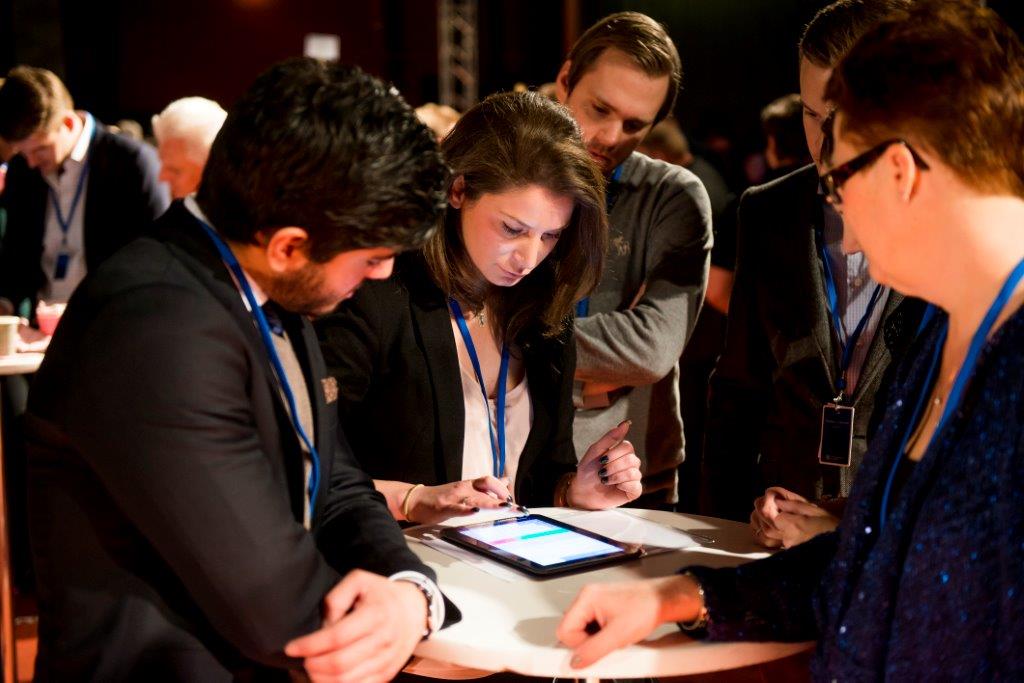Training is phenomenally expensive when it doesn’t make a difference to your company’s performance.
If training your employees in the most cost effective way possible is an absolute must, then this article from Forbes makes compelling reading. Information overload is a modern training dilemma as people’s attention spans have decreased.
Hi my name is Georgie Mann and I had to share this crucial information, ‘the average human attention span has fallen from 12 seconds in 2000, to eight seconds‘. Engaging your employees attention and keeping it, is now a critical factor when devising your training and its’ delivery method. Creating business games increases attention rates. As Stephen Baer goes on to say ‘Games engage audiences with social and competitive elements, driving heightened attention, sustained focus, and more action. In a game-based learning case study, Karl Kapp reveals data that shows a 17% higher retention rate in curriculum involving gaming over lectures.’
Creating powerful employee game based training designed around your company objectives and topics is our speciality. Whether it’s rolling out a new strategy or embedding corporate values, gamifying your challenge will get you better results, faster. Read the blog below:

Five Strategies for Turning Your Employee Training into a Game
(Opinions expressed by Forbes Contributors are their own).
Post written by Stephen Baer, Head of Creative Strategy & Innovation at The Game Agency, creating digital solutions that acquire and activate audiences. MAR 29, 2017 @ 09:00 AM
It’s noon on Monday and your team’s work week has gotten off to a perfect start. Your employees have gone through a three-hour training session to master the basics of your company’s newest product and they’ve headed to lunch. Starting tomorrow they will be ready to speak with clients.
Or will they?
By lunch time on Tuesday, it’s likely that your employees will have forgotten most of the training session details, despite the fact that your training included a lively discussion.
Scientists have studied the “new normal” of our ability to concentrate, and have found that the average human attention span has fallen from 12 seconds in 2000 to eight seconds. Employees consume media nearly 11 hours each day and shift their attention between their smartphone, tablet and computer 21 times every hour. Employees no longer consider what they are looking at but rather what else they should be looking at. As a result, companies are asking how to get and keep their employee’s attention.
Games are one possible solution. Games engage audiences with social and competitive elements, driving heightened attention, sustained focus, and more action. In a game-based learning case study, Karl Kapp reveals data that shows a 17% higher retention rate in curriculum involving gaming over lectures. Games are extremely malleable and can be applied throughout a wide range of fields and industries.

Last year, one of our clients, a pharmaceutical company, asked us to support their national sales training meeting for the launch of a new product. Like all pharma companies, they needed to ensure that the hundreds of sales representatives at the training event learned the myriad of details about their new drug and how to effectively communicate the information to doctors. The sales reps were told that after each session, they’d be playing a game on the specific topic which kept everyone on their toes (what we call actively listening). By playing a contextually relevant game, the sales reps were actively participating in their learning. In immediately using the information to play the game, the data was being driven into the long-term memory areas of their brains to help them better retain and access this information in the future.
Here are five ways turning your training into a game will improve your staff’s retention and productivity.
Tell a story with your subject matter. Create a reason for your employees to interact with your content within an appropriate context. Have them search for treasures or characters along the way to add incentives to engage in the storyline. For example, a pharmaceutical company client of ours helped physicians better understand their patients with HIV by providing a customized online e-learning course that focuses on communication, patient engagement and quality care.
Actively engage. Let employees know that they are controlling the action of the story rather than merely reading through a storybook. Let them know it’s acceptable to be wrong by simply correcting them as they go along, thereby promoting strong decision making. For example, another pharmaceutical company launched a role-playing video game that took place in a James Bond-like atmosphere in which players chose and personalized characters, got behind the wheel of a sleek, high-tech vehicle, received sales directions from headquarters, and focused on overcoming healthcare professional objections.

Use levels and badges. Game levels will allow you to guide employees through segments of linear content. Let the learner know at the beginning how many levels they need to achieve, and tie each one to a learning objective.
Encourage collaboration. Playing together allows employees to mutually invest in the outcome of the game. Your team can then hone skills, define roles, provide constructive criticism, and develop a unified vision.
Build a leaderboard. Simple and impactful, personalized leaderboards allow employees to choose their friends to compete with and see a display of their relative position within the team by showing five scores above and below the learner’s score. And always make sure to allow access to the top scores.
You provide the challenge, we provide the solution with our bespoke employee game based training. Get a real feel for our employee game based training



